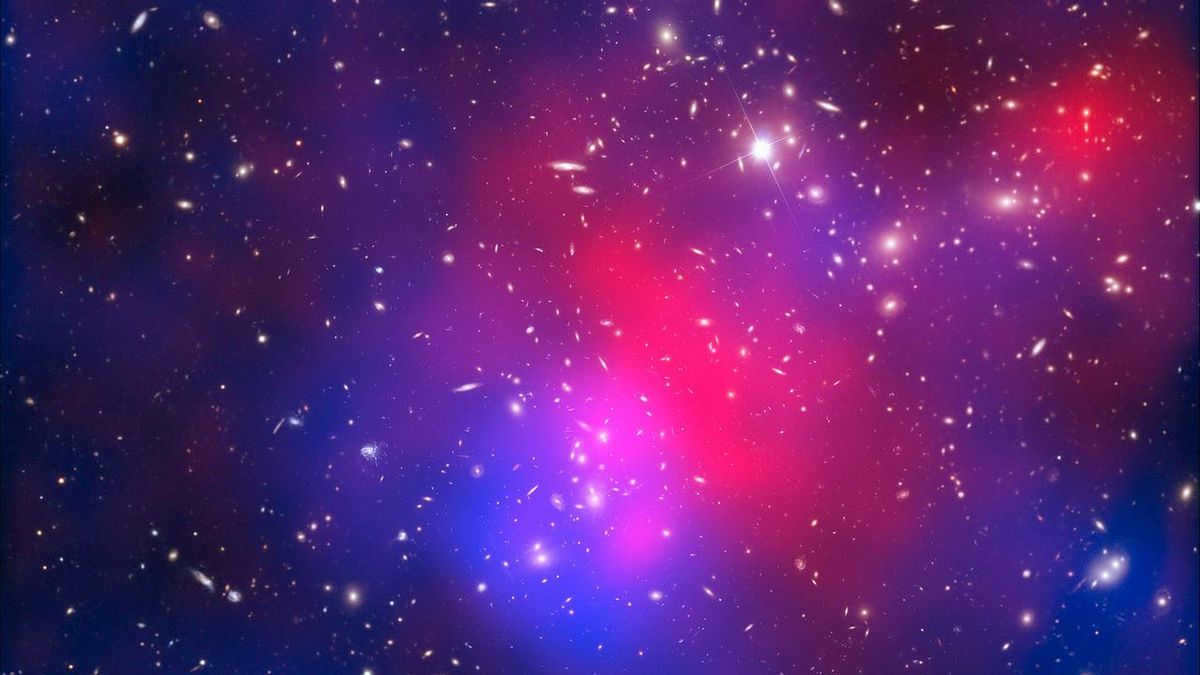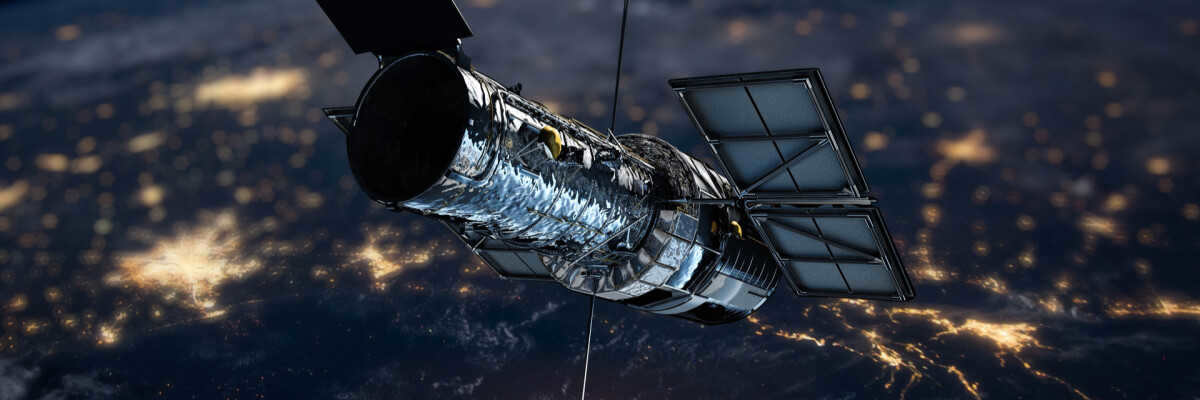
The pursuit of space exploration is a key focus in the ongoing technological competition among developed nations.
These countries aspire to send popular music CDs, tourist shuttles, and even the first human colonizers to Mars (or another potentially habitable planet). As a result, there has been a surge in the number of innovations in the field of space exploration. Artificial satellites, spacecraft, and cutting-edge stations equipped to handle vast amounts of data are being launched into orbit. Nearly three decades ago, the first telescope was deployed and it continues to operate flawlessly in space.
Interested in delving deeper into the space telescope, its creator, techniques for repairing the equipment directly in orbit, and NASA’s future plans for its utilization? We’ve meticulously crafted a comprehensive guide to the expansive universe of the Hubble telescope just for you.
Hubble Space Telescope: the genesis
The telescope is essentially a collaborative effort between NASA and the European Space Agency. It was deployed into space to capture electromagnetic radiation in the infrared spectrum (invisible to the naked eye without the aid of specialized equipment). According to NASA experts, the telescope surpasses its terrestrial counterparts by a factor of ten in performance.
The concept of placing a telescope in orbit was initially suggested by astrophysicist Lyman Spitzer. He provided scientific justification for the necessity of such a device in space around a century ago. The first prototypes of telescopes were sent into orbit in the mid-1960s. An apparatus similar to the “Hubble” telescope was planned for launch as early as 1972, but insufficient funding resulted in the failure of this endeavor.
To start with, researchers opted to select a moniker for the forthcoming telescope. Consequently, it came to be known as the Edwin Hubble telescope, in honor of the esteemed scientist who proposed several seminal scientific hypotheses and substantiated the hitherto unverified presence of an immense multitude of galaxies in the cosmos. During the 1920s, he identified pulsating variable stars within nebulae situated at such a distance from Earth that they could not be deemed constituents of our own galaxy. Prior to his breakthrough, astronomers harbored the notion that the Milky Way constituted the sole galaxy in existence.
The budget for the telescope was eventually increased, and boy did it increase. Starting at a mere 36 million dollars, the cost of the project skyrocketed to a whopping 400 million. As time went on, the expenses continued to rise – more and more time had to be dedicated to perfecting the mirrors and assembling a functional system from the available components. The launch was originally planned for the mid-80s, but it did not come to fruition. The “Space Shuttle” program, which was scheduled to make 24 launches in a year, was put on hold due to the 1986 disaster when a space shuttle and its crew tragically crashed just seconds after takeoff. As a result, the project was temporarily frozen. Finally, in 1990, the telescope was successfully deployed into orbit, but not without a hefty price tag. By this point, approximately 2.5 billion dollars had already been spent on the project. At present, the total cost of the endeavor is estimated to be close to 10 billion dollars.
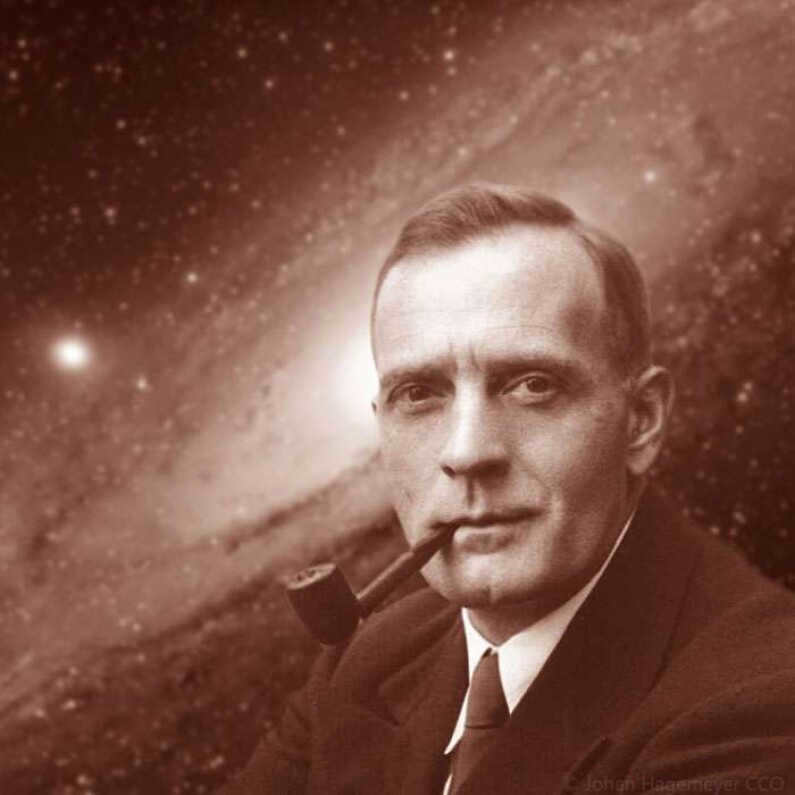
Edwin Hubble, an eminent figure in the field of space and astronomy during the 20th century, is widely recognized for his significant contributions. Throughout his career, he collaborated with various observatories to execute groundbreaking scientific projects. Among his notable achievements, Hubble unveiled the existence of numerous galaxies and formulated the renowned “Hubble’s law” which describes the expansion of the universe.
Dedicating his life to the study of galaxies and star clusters, Hubble’s impact on the field remains profound. Although he did not directly contribute to the development of a space-based telescope, an asteroid was named in his honor. The decision to name the device after Hubble was a testament to his status as a leading authority in space exploration at the time of the telescope’s launch. In this way, the developers sought to immortalize not themselves, but the legacy of their esteemed “teacher”.
Unique Technical Characteristics of the Hubble Telescope
The Hubble telescope’s optics, which resulted in a significant increase in project funding, were developed based on the Ritchie-Chretien system. Unlike the familiar lenses, the telescope utilizes a system of double-mirror lenses in reflector telescopes. It is remarkable that the components used in constructing the telescope have remained unchanged for 30 years since its launch into orbit. However, the instruments employed for maintaining the telescope have undergone frequent updates.
In addition to having multiple mirrors (ranging from 13 to 6), the telescope is equipped with a WFC3-type camera. In 2009, a new camera was introduced to replace the old one, which produced square-shaped images with one corner missing. The WFPC2 camera encountered issues with a sensor that captured images at varying magnifications, making it impossible to create a final image using a single scope. As a result, critical images had to be re-captured using the new equipment.
The telescope was originally designed to operate for a maximum of 15 years, but it has been continuously functioning in orbit for twice as long and shows no signs of stopping due to technical reasons. Weighing approximately 12 tons and measuring no more than 13 meters in length, this compact device carries the weight of the entire global space exploration industry.
Objectives of the orbital telescope
The primary objectives of the telescope entail the detection and capture of electromagnetic radiation, as well as the transmission of diverse imagery of celestial entities back to Earth. Throughout its tenure in orbit, the telescope has amassed approximately 1.5 million such photographs. The data amassed by the telescope surpasses 50 terabytes. Based on this extensive dataset, contemporary astronomers have published countless scientific papers and articles investigating space and pioneering advancements in this domain.
Undoubtedly, the primary objective of launching the telescope into orbit is to carry out scientific research. However, industry insiders, who are well-versed in the field, raise valid concerns about the astronomical amount of funding allocated for this project. It could have been possible to obtain the same data, albeit with a smaller sample size, using the existing telescopes on Earth without the need for additional funds for a space mission. Nevertheless, the discovery of new satellites and the study of distant galaxies became achievable solely due to the extensive utilization of the Hubble telescope. Placing a telescope in space enables researchers to confirm or refute scientific hypotheses with greater precision simply because of its proximity to the objects under investigation. On the other hand, an “Earth” telescope merely permits the formulation of hypotheses, whereas Hubble strives to gather substantial evidence.
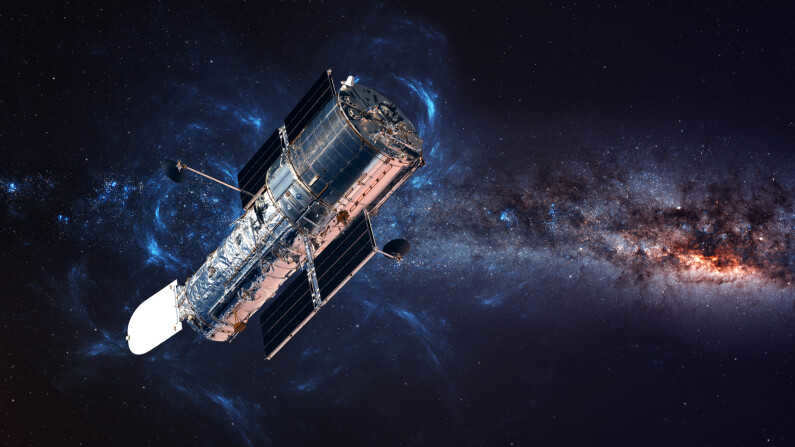
The ground-based support center, located in Maryland, USA, oversees the operation of the telescope. This department is responsible for making technical decisions and determining which objects and data will be studied with the Hubble. During expeditions to the telescope, the staffing is increased, with a team of 10 people handling all operations on a regular basis.
Each year, scientists from around the world can submit a request to the telescope to collect data. These requests total about a thousand, providing researchers with the necessary data for their studies. Hubble carries out 15-20 thousand observations annually, and the results are shared with scientific centers that have reserved time to conduct research using the space telescope.
The remarkable discoveries made by “Hubble” telescope
The “Hubble” telescope has made significant contributions to the field of astronomy. One of its most notable achievements is accurately determining the value of the Hubble constant, which had previously been off by 50%. Thanks to the telescope, the maximum error in calculating the constant is now only 10%, a remarkable improvement. The Hubble constant represents the relationship between the distance to a galaxy and its speed of movement away from us.
In addition to this groundbreaking achievement, the “Hubble” telescope has captured numerous captivating images and observations. It documented the moment when a comet collided with Jupiter, providing valuable insights into the dynamics of celestial bodies. The telescope has also captured stunning images of the surfaces of Pluto and Saturn, giving us a closer look at these distant planets. Furthermore, it has observed planetary disks around stars in various nebulae, shedding light on the formation of planetary systems.
One of the most significant contributions of the “Hubble” telescope is its role in confirming the existence of black holes at the center of galaxies. Through its observations, it has provided compelling evidence for the presence of these mysterious cosmic phenomena. Additionally, the telescope has transmitted invaluable data that has contributed to the development of a cosmological model of the universe, helping us better understand the vastness and complexity of our cosmic surroundings.
During its initial decade, the telescope garnered significant scientific acclaim. However, it seems that scientists have since become accustomed to the “Earth’s eye” being present in orbit continuously.
In 2013, the instrument made a groundbreaking discovery by identifying Hippocampus, a moon of Neptune. Three years later, it unveiled the existence of a previously unknown galaxy. In 2018, the telescope transmitted images capturing one of the oldest galaxies ever observed, estimated to have been in existence for approximately 500 million years.
How space missions address telescope malfunctions in the cosmos
The telescope’s major malfunctions were discovered in the 1990s when it initially entered orbit. Its level of sharpness decreased, casting doubt on the accuracy of the collected data, thus preventing the completion of most of the planned studies. The cause of the breakdown was determined to be improper grinding of the mirror, resulting in the need for several million dollars in additional funding. A corrective system had to be developed for the lens, which was subsequently delivered into orbit during the next expedition. Specialized technicians had to venture into outer space to carry out the necessary maintenance since it was impossible to correct the lens from any other location. The installation of the device took several attempts due to the astronauts’ lack of prior knowledge about working with the telescope in orbit. Furthermore, the camera, which produced inaccurate images due to lens issues, was also replaced.
The Current Condition of the Telescope and Predictions for the Future
Currently, the telescope has surpassed expectations by operating in orbit for approximately 30 years. Initially, scientists predicted that it would only remain in space until 2014. However, due to the unpreparedness of upcoming projects to launch new telescopes, NASA has extended the retirement deadline for the Hubble by 5 years. A new telescope is scheduled to be launched in 2021, but specific details regarding its readiness are still unknown. To prolong the lifespan of the Hubble, certain systems will need to be switched to a safe mode of operation. Although this will limit the telescope’s scientific research capabilities, it will provide additional time for the construction of a replacement apparatus.
Experience High-quality Images from the Hubble Telescope
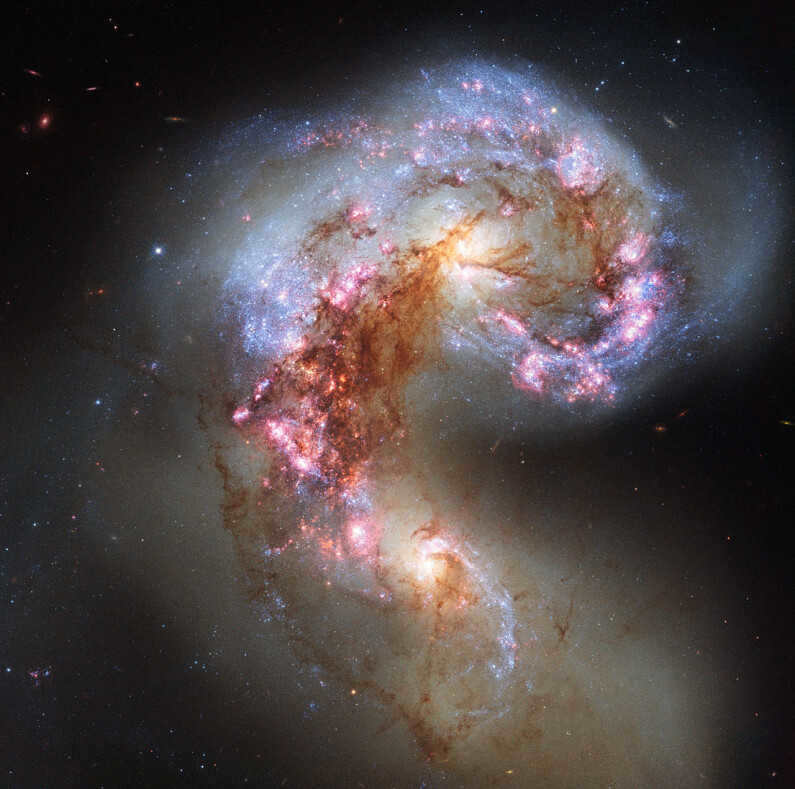
Galactic aerials
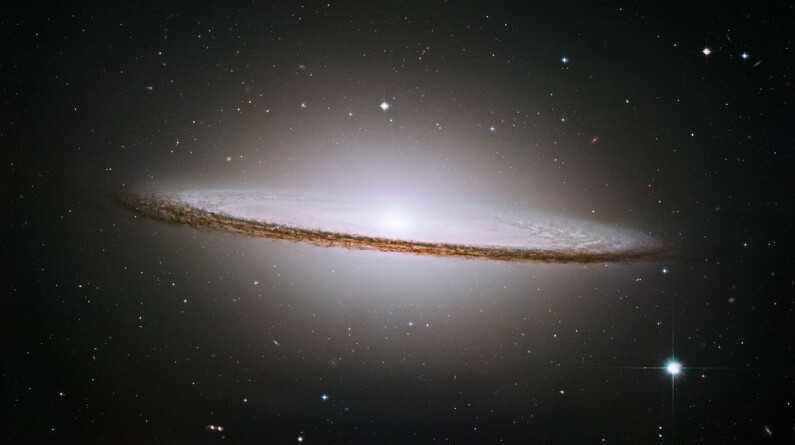
A collage of the Sombrero Galaxy
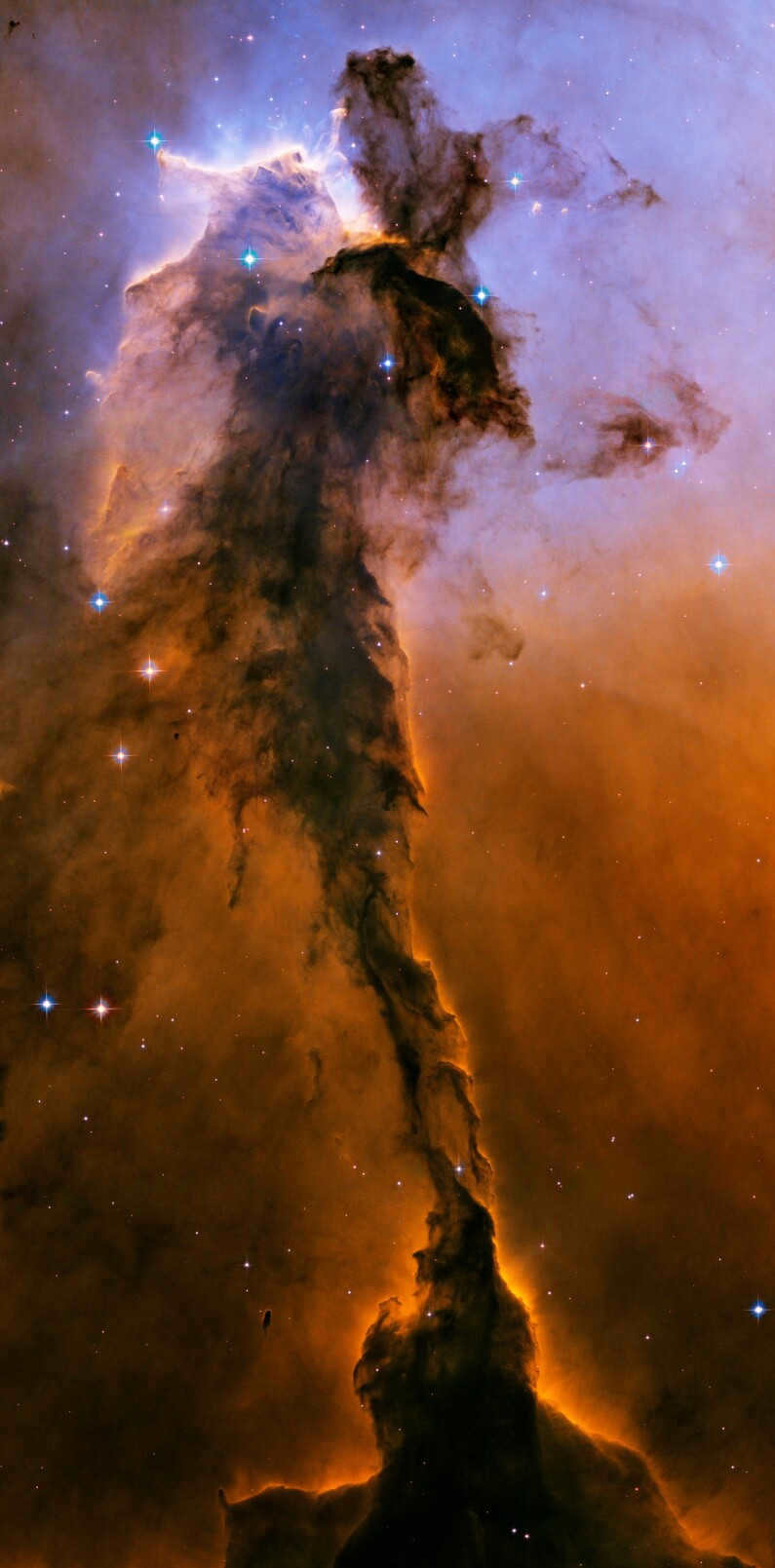
One can observe a stellar pinnacle within the Eagle Nebula.
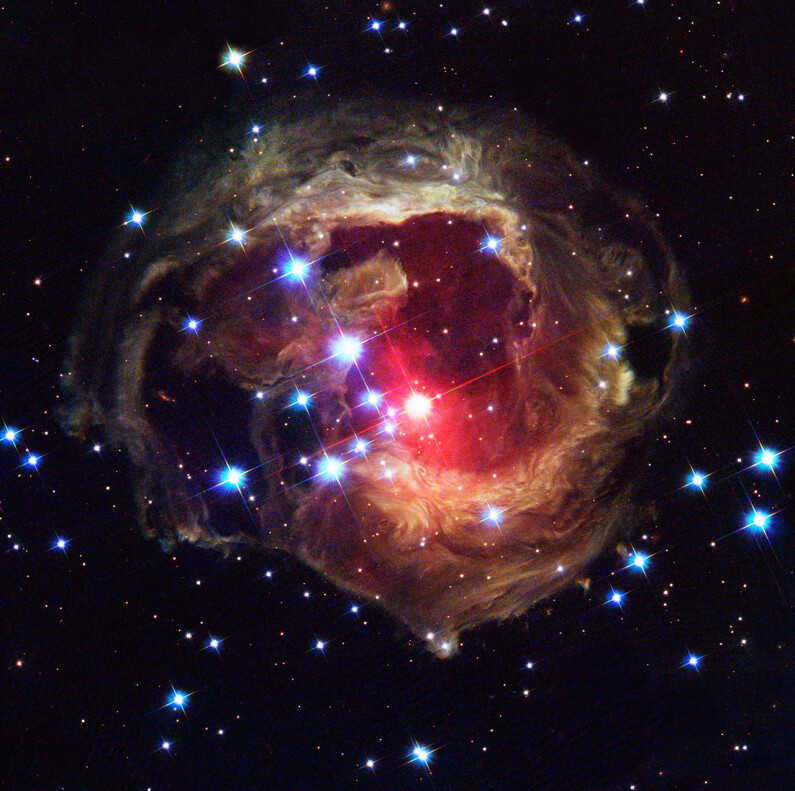
A light echo that occurred three years after the star’s demise.
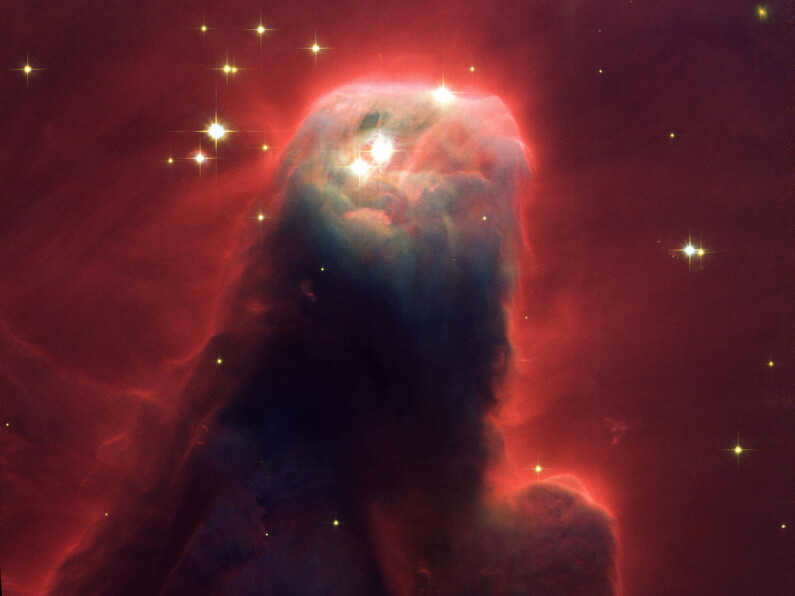
Forming a new star is a massive structure made up of gas and dust.
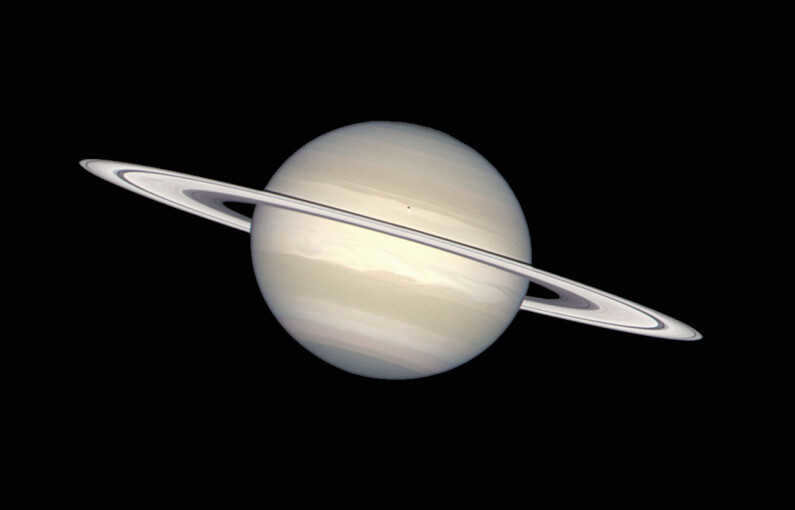
The majestic beauty of Saturn in all its natural splendor
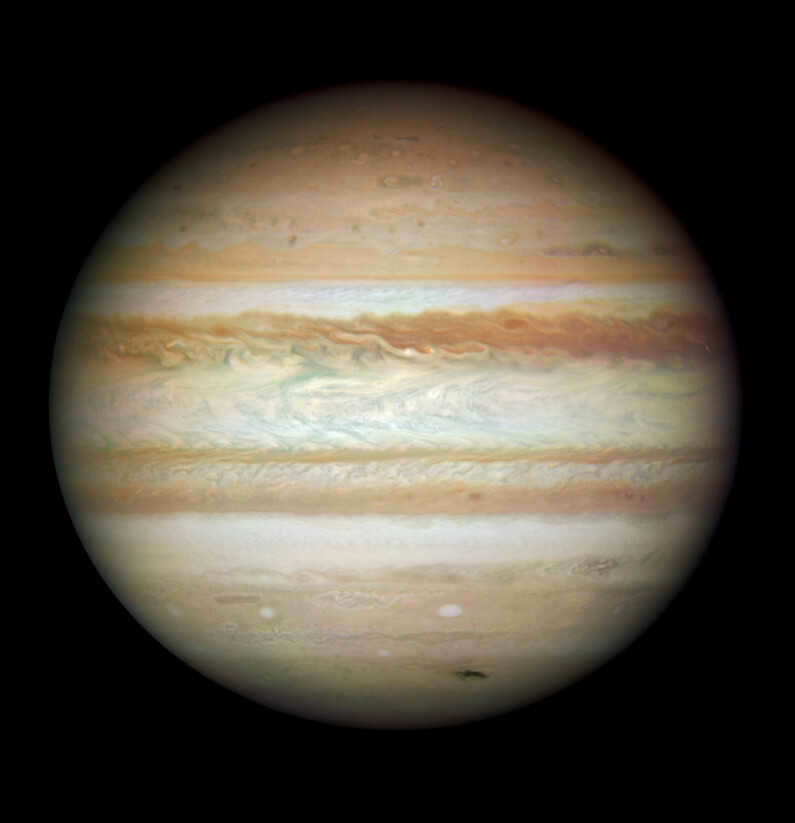
A breathtaking glimpse of Jupiter
The Hubble telescope will forever be remembered as one of the most enduring celestial devices to orbit Earth. Despite the numerous challenges it faced during launch and maintenance, Hubble has contributed to half of the advancements in the fields of astronomy and astrophysics. As previously mentioned, the telescope continues to excel in its original missions, operating flawlessly and assisting researchers worldwide in either validating or refuting their hypotheses.
Feel free to share this with your acquaintances!
Be the first to leave a comment
Please sign in to share your thoughts
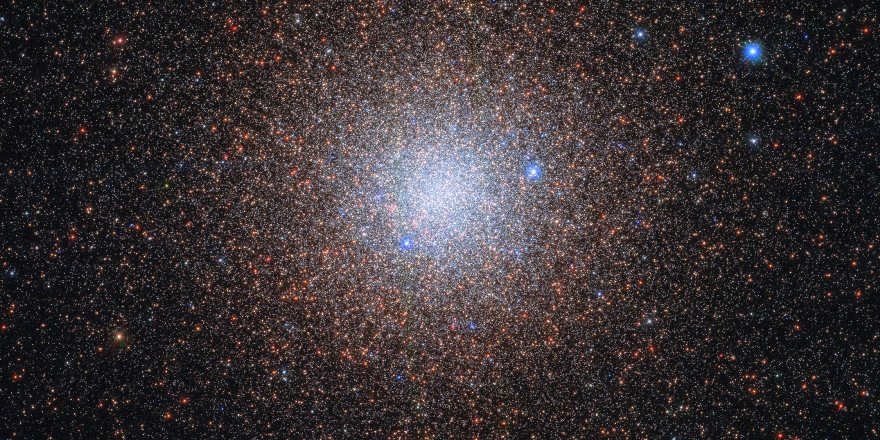
Ever since the beginning of the universe, space has been continuously expanding. This process started approximately 13.8 billion years ago and has been ongoing, causing the universe to inflate like a massive cosmic balloon.
The Hubble constant, also known as H0, represents the current rate of expansion of the universe. It is a crucial measurement in understanding the fundamental aspects of the cosmos.
By knowing the Hubble constant, various significant calculations can be made. For instance, it allows us to determine the age and size of the universe accurately. Additionally, it plays a crucial role in calculating the impact of the enigmatic dark energy that propels the universe’s expansion. Notably, H0 is also essential in calculating intergalactic distances.
Nevertheless, we are faced with a significant predicament. Numerous methods exist for accurately determining the Hubble constant, yet these methods consistently yield different results for reasons that remain unknown.
One possibility is that there may be a calibration issue with the measurement methods we employ to calculate cosmic distances (more on this later). Alternatively, it could be an unidentified characteristic of dark energy.
Alternatively, it is plausible that our comprehension of fundamental physics is incomplete. Resolving this issue may necessitate a groundbreaking discovery, which is often rewarded with Nobel prizes.
Essential Concepts
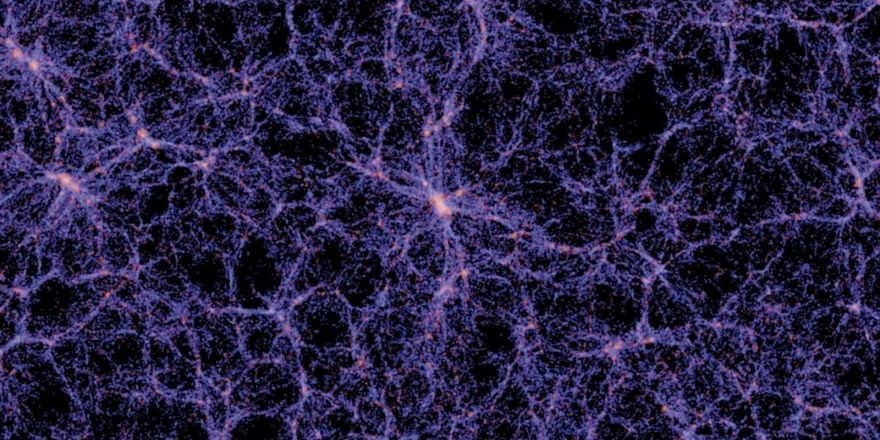
An artistic depiction of the distribution of dark matter in the Universe. Image: NASA
The value of Hubble’s constant is typically represented using an unconventional combination of units for distance and time – kilometers per second per megaparsec or (km/s) / Mpc; a megaparsec is approximately equivalent to 3.3 million light-years.
This particular combination is necessary due to the accelerating expansion of the universe. Objects that are further away from us appear to be receding at a faster rate. Hypothetically, if we were to discover that a galaxy located 1 megaparsec away was receding at a rate of 10 km/s, and a galaxy 10 megaparsecs away appeared to be moving away at a rate of 100 km/s, we could express the ratio as 10 km/s per megaparsec.
In simpler terms, by determining the proportional relationship between the speed at which galaxies are moving away from us (km/s) and their distance from us (Mpc), we can ascertain the value of H0.
Imagine if there was a simple method to quantify all of this.
Astronomers have devised multiple techniques for calculating the Hubble constant, but the primary approaches involve the utilization of either standard rulers or standard candles.
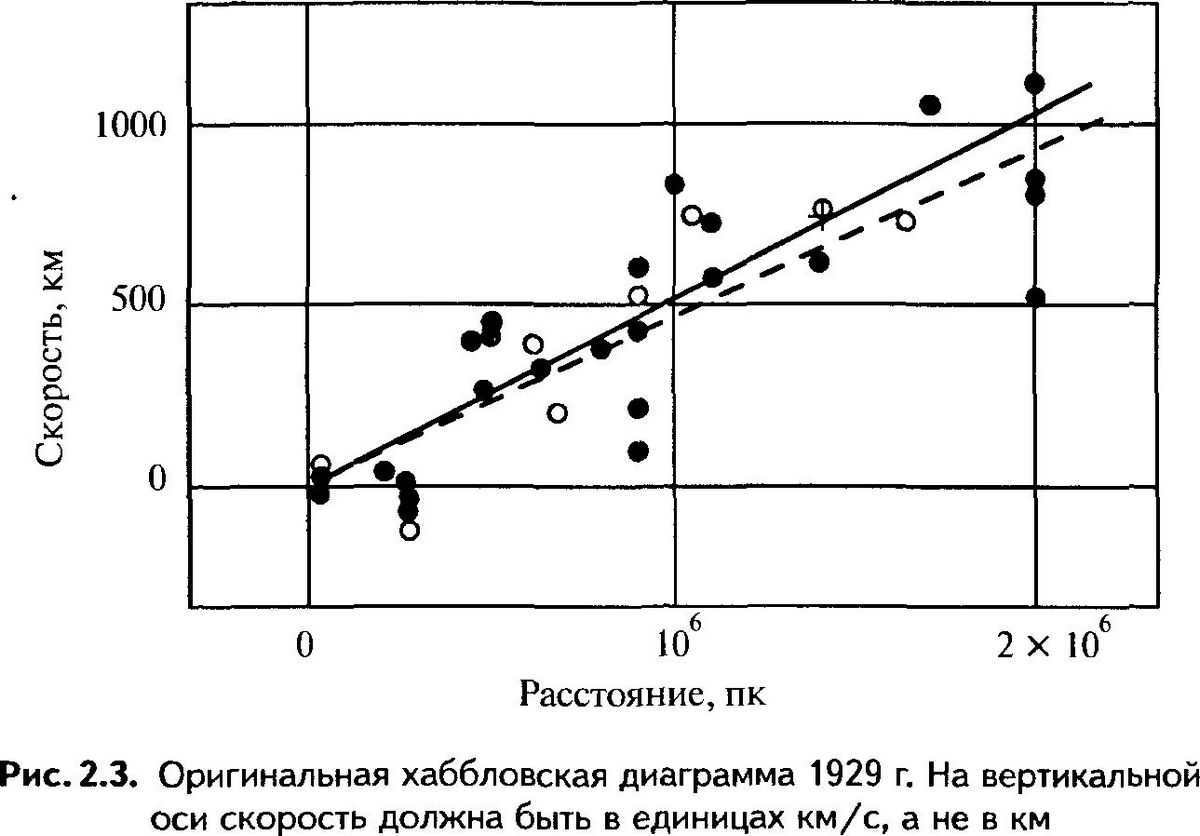
Velocity and distance (according to Hubble’s papers from 1929).
Conventional measuring tools are derived from signals originating from a time period in the early Universe known as the Age of Recombination. Following the Big Bang, the Universe was incredibly hot and dense, preventing the formation of atoms. Instead, there existed a hot, opaque plasma cloud, which eventually cooled and expanded over approximately 380,000 years. At this point, the plasma began to recombine into atoms.
We rely on two signals from this era. The first is the cosmic microwave background (CMB) – the light that emerged from the plasma cloud when matter recombined and space became transparent. This initial light, though still faint, uniformly permeates the Universe in all directions.
The changes in temperature in the relic radiation are indicative of the expansions and contractions that occurred in the early Universe. These fluctuations must be taken into account when calculating the expansion history of our Universe.
The second signal, known as baryonic acoustic oscillations, is the result of spherical density acoustic waves that traveled through the plasma fog of the early Universe and ceased during the Age of Recombination.
Throughout the history of the universe, density changes have provided a “ruler” for measuring distances. An acoustic wave could travel approximately 150 megaparsecs during that time period.
On the contrary, standard candles utilize objects within the local universe to gauge distance. However, these objects cannot simply be old stars or galaxies; they must possess a recognized intrinsic brightness, such as Type Ia supernovae, variable cepheid stars, or stars situated at the apex of the red giant branch.
Astrophysicist Tamara Davies from the University of Queensland in Australia explains, “While observing stars in the night sky, their position can be accurately determined left and right, but determining their distance is a challenge. It is difficult to differentiate between a bright object that is far away and a faint object that is close. Therefore, the solution is to utilize a standard reference point. A standard candle refers to an object with a known brightness.”
Both standard rulers and standard candles are as precise as possible, but they yield varying outcomes when utilized to determine the Hubble constant.
The standard rulers, which pertain to the early universe, estimate H0 to be approximately 67 kilometers per second per megaparsec. Conversely, the standard candles, which pertain to the local Universe, estimate it to be about 74 kilometers per second per megaparsec.
Neither of these findings possesses a margin of error that could even remotely bridge the gap between them.
The origin of the gap
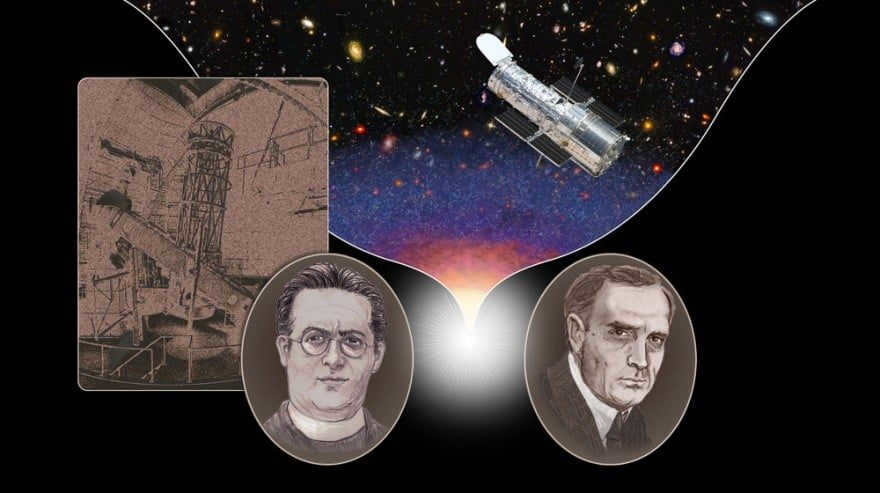
Astronomers Alexander Friedman and Georges Lemaître were the first to observe the expansion of the universe in the 1920s. By 1929, Edwin Hubble had determined the rate of expansion by studying variable cepheid stars, which have the ability to change in brightness. These stars serve as a valuable tool for measuring distances, as their brightness is directly related to their intrinsic properties.
However, there were some inaccuracies in the calibration of these distances, leading to discrepancies in the measurement of cosmic distances. Consequently, initial calculations estimated H0 to be around 500 kilometers per second per megaparsec.
"This immediately posed a problem, as geologists studying the Earth had determined that the Earth was approximately 4 billion years old," Davis explained.
“If the expansion rate is calculated as 500 kilometers per second, the time it would take to reach the current size of the universe can be calculated, and it turns out to be approximately 2 billion years. This implies that the Earth is older than the universe, which is logically impossible.”
That was the prevailing understanding of Hubble’s constant until the 1950s, when German astronomer Walter Baade discovered two types of variable cepheid stars, which allowed for a more accurate calculation of Hubble’s constant. It was revised to 100 (km/s)/Mpc.
As technology, methods, and understanding have advanced, so have the calculations of the Hubble constant, increasing our confidence in them.
“In the past, our error bars were around plus or minus 50,” Davis stated. “However, due to significant improvements in measurement accuracy, our error bars are now only plus or minus 1 or 2. These differences in measurement methods make it challenging to attribute them solely to measurement errors.”
Currently, the discrepancy between the two values, referred to as the Hubble voltage, may not appear significant – just 9.4 percent.
Nevertheless, cosmologists have yet to determine the underlying cause of this discrepancy. While a calibration issue seems like the most obvious explanation, its origin remains elusive.
Multiple teams have computed H0 using data from the Planck space observatory, which measures relic radiation. The issue may lie in how we interpret the data. However, a study of the relic emission in 2019 conducted by the Atacama Cosmological Telescope confirmed Planck’s findings.
Furthermore, H0 calculations based on baryonic acoustic oscillations, measured by the Sloan Digital Sky Survey, yielded the same result.
It’s possible that our reliance on standard candles is leading us astray as well. These objects form a “ladder of cosmic distances” and are categorized into different steps. To determine distances to two types of variable stars, we first utilize parallax, which refers to the apparent change in position of close stars relative to more distant stars.
There have been other efforts to address the issue that revolve around conceptualizing the very space around us.
One such proposal is known as the Hubble bubble hypothesis, which suggests that the Milky Way is situated within a comparatively low-density “bubble” in the Universe, surrounded by regions of higher density. The gravitational influence of this higher-density material would pull on the space within the bubble, causing it to expand at a faster rate than the rest of the early universe.
Nevertheless, even if all of the above factors were to contribute to the problem, it would only account for a 9.4% discrepancy at best.
“There have been various creative suggestions on how the methods may not align,” says Matthew Colless, a cosmologist at the Australian National University. “However, no one has successfully argued that a specific error can account for the observed discrepancies. It is plausible that multiple small errors coincidentally aligned in one direction, but these errors are unrelated. It would be highly unexpected and unfortunate if that were the case, with all the different types of errors accumulating and leading to the same outcome.”
Is Physics to Blame for the Hubble Constant Mystery?
For the most part, our cosmological models are highly successful. However, if we were to alter the Hubble constant, it is likely that other aspects of our models would be affected.
“While it is possible to modify the standard ruler,” Colless explains, “doing so would disrupt other well-established observations such as the total matter content of the universe and the mass of neutrinos. These are crucial components that are accurately accounted for in the current model, but would be compromised by any changes made to ‘fix’ the standard ruler.”
So, where does this leave us? Is this a fundamental physics issue that we need to address?
“I have a rational belief that this is probably an error,” Davis remarked, “However, it is extremely difficult to elucidate the source of this error in the current measurements. It is a fascinating inconsistency. And it is truly intriguing to attempt to comprehend – why this occurred.”
The Hubble tension presents a challenging problem that eludes any endeavor at a resolution that cosmologists can devise.
Perhaps there is an aspect that the general theory of relativity does not take into consideration. That would be extraordinary: Einstein’s theory has endured countless tests, but we cannot dismiss that possibility.
“We have a general idea that it could be the cosmological constant, which is Einstein’s concept of vacuum energy,” stated Colless. “However, we lack a reliable method to accurately predict the value of the cosmological constant and understand how it functions.”
Alternatively, it is possible that our current understanding of gravity has some gaps. However, Colless mentioned that “significant modifications to the fundamental and general theory of relativity are extremely rare within the realm of new physics.”
“If new physics were to arise and necessitate a modification to the general theory of relativity, it would undoubtedly be a groundbreaking achievement in the field of physics, worthy of a Nobel Prize.”
The sole path to progress
Whether it is an error in calibration, a significant miscalculation in our current comprehension of physics, or some other factor, there is just one course of action if we are to rectify Hubble’s constant – engage in scientific inquiry.
Initially, cosmologists can analyze the existing data on standard candles and standard rulers, refining them further and diminishing the margin of error. Additionally, we can gather fresh data.
For instance, Colless is presently involved in a project in Australia utilizing the cutting-edge TAIPAN instrument recently installed at Siding Spring Observatory. This team will conduct a comprehensive survey of millions of galaxies in the immediate universe in order to measure baryonic acoustic oscillations as close to us as feasible, in order to address any potential measurement issues stemming from distance.
“We are planning to conduct a comprehensive survey of 2 million galaxies, primarily in the Southern Hemisphere with some coverage in the Northern Hemisphere, in order to accurately measure the baryonic acoustic oscillation signal at a precision level of 1%. This ambitious project, known as TAIPAN, will enable us to gather valuable data and insights about the structure and composition of these galaxies.”
“If TAIPAN yields consistent results with a Hubble constant (H0) of 67 kilometers per second per megaparsec, it would suggest that our current understanding of the universe is accurate. However, if the measurements indicate a Hubble constant closer to 74 kilometers per second per megaparsec, it could indicate that our current methods of measuring cosmic distances, such as using standard candles, may need to be revised.”
“In addition to exploring the accuracy of standard candles and rulers, this project opens up new avenues of research into gravitational-wave astronomy. By studying the ripples in space-time caused by massive collisions between black holes and neutron stars, we can potentially develop a new method of measurement known as standard sirens. These gravitational-wave signals could provide us with a unique perspective on the universe and help us further refine our understanding of its fundamental properties.”
This, as stated by Davis, was absolutely astonishing.
“We have now observed numerous supernovae,” she stated, “We have measured millions of galaxies in order to gather baryonic acoustic oscillation data. We have conducted a comprehensive survey of the entire sky to measure the cosmic microwave background. And this particular object, this specific gravitational-wave measurement, has an error margin of approximately 10 percent, which required decades of research on other investigations.”
Gravitational-wave astronomy is still in its early stages – it is only a matter of time before we detect a sufficient number of neutron star collisions to refine the findings. With some luck, this will assist in uncovering the cause of the Hubble tension.
Regardless of the outcome, it will go down in the annals of history. The potential breakthrough in physics would undoubtedly be extraordinary, but the discrepancy in the distance scale would have significant implications for astronomy. It could signify a lack of understanding regarding Type Ia supernovae or the evolutionary processes of stars.
Whichever way it transpires, resolving the Hubble tension will undoubtedly have a profound impact on the field of astronomical science as a whole.
“That’s why cosmologists are so thrilled by this discovery. The fact that cosmological theory has been so successful makes it all the more exhilarating when we encounter something that it cannot account for. It is through these moments of disruption that we gain new insights,” Colless explained. “The scientific method is founded on experimentation and learning from mistakes, and it is in those errors that we make groundbreaking discoveries.”
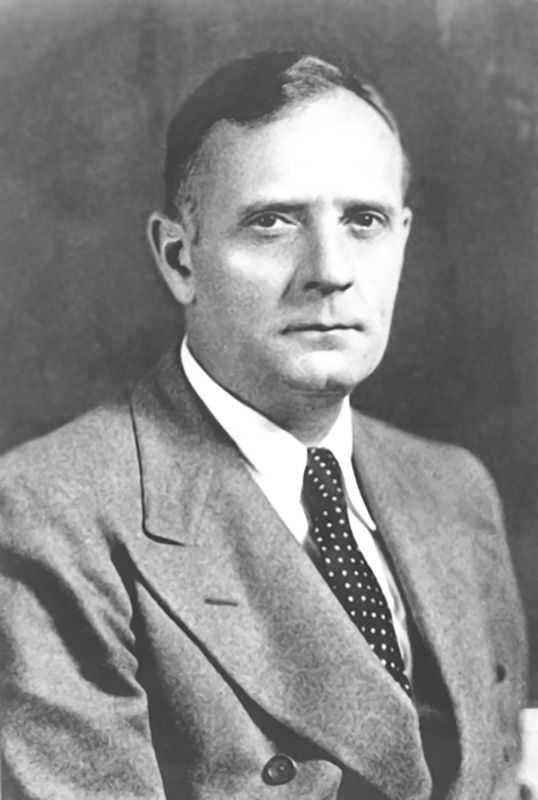
Edwin Hubble, one of the most prominent cosmologists and astronomers of the 20th century, is renowned as the person who revealed the secrets of the universe. His contributions to the field have been so profound that he has become known as the discoverer of the cosmos. Hubble’s name is associated with a telescope, a law, an asteroid, and a constant, all of which have played a significant role in advancing our understanding of galaxies and the vastness of space.
Early Years of Childhood
A boy was born to the Hubble couple on November 20, 1889, in the American town of Marshfield, Missouri. The parents, John Powell Hubble and Virginia Lee James, named their baby Edwin (Edwin Powell Hubble).
During his early years of childhood, Edwin showcased exceptional athletic abilities and had a passion for various sports, including basketball, baseball, soccer, and amateur boxing. His father, who worked as a manager at an insurance company, moved the family to Illinois, where Edwin achieved a high jump record among high school students.
From a young age, Edwin developed a love for fishing and avidly read books by science fiction writers, with Jules Verne and Henry Ryder being his favorites.
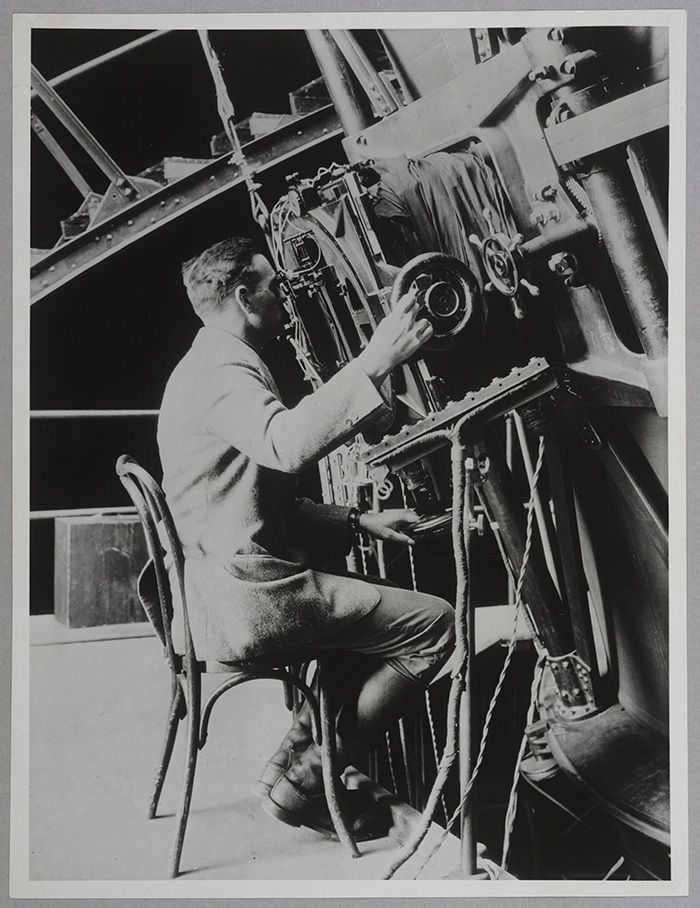
Edwin Hubble working in 1937.
Academic Background
During his time in college, Edwin Hubble developed a keen interest in various scientific disciplines. After completing his undergraduate studies in mathematics and astronomy at the University of Chicago, he made the decision to pursue further education at Oxford University.
Despite his mother’s disapproval of his fascination with astronomy, Edwin ended up studying law under her influence. However, in 1913, he returned to the United States and became a member of the bar.
The start of the journey
Hubble selects the Yerkes Observatory as his educational institution, where he commences his research for his dissertation. In 1917, he is awarded his PhD in astronomy, after successfully presenting his research papers on the topic of capturing images of dim nebulae.
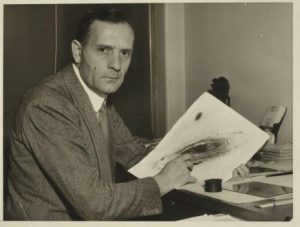

Edwin Hubble embarked on a mission to determine the magnitude of the cosmos, encompassing stellar systems and galaxies.
During the same era, Edwin was presented with a prestigious opportunity at the Mount Wilson Observatory (California). However, the conflict with Germany disrupted his plans, and Hubble enlisted as a volunteer in the war effort.
After rising through the ranks to become a major, he eventually returned to civilian life and resumed his studies in astronomy. At Mount Wilson, he was granted access to the world’s largest telescope, known as the Hooker.
Prior to Hubble’s research, scientists adhered to the belief that the universe solely comprised of our galaxy and the Milky Way. However, the scientist refuted this theory based on his own observations.
Great Science
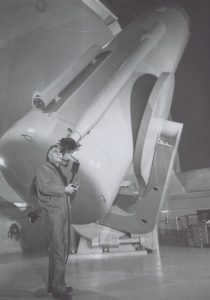

Hubble conducted his research at the giant telescope located at Mount Wilson Observatory. This telescope was instrumental in all of his scientific studies.
The Hooker telescope revolutionized our understanding of the universe by enabling the detection of distant nebulae outside the Milky Way. This discovery revealed the existence of other galaxies besides our own, fundamentally changing our perception of the cosmos.
Due to the outbreak of World War I, Edwin temporarily halted his research and joined the military. During his service, he focused on ballistics but soon realized that his true calling was in the field of science, not warfare.
Recognizing that his expertise would be more valuable in studying galaxies, Hubble returned to his work at Mount Wilson after the war.
Tragically, Edwin Hubble passed away in 1953 following a stroke. He was 63 years old at the time of his death and was laid to rest in California.
Significant accomplishments
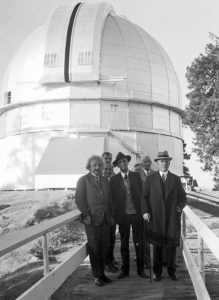

Hubble and his colleagues conducted their observations at the Mount Wilson Observatory. The observatory had a unique feature – a dome-shaped roof that could be opened up, allowing the telescope to “observe” the night sky.
The renowned scientist, credited with the discovery of the cosmos, was not awarded the Nobel Prize due to the fact that the award was not given in this field during his active years. However, he received numerous other prestigious honors and accolades for his significant contributions to the field of astrophysics, including orders, medals, the Selliman Lecture, and the Legion of Honor (for his work in ballistic developments).
Some of the scientist’s major achievements include the following discoveries:
- Hubble’s Law states that the further away a galaxy is from us, the more its light is shifted towards the red end of the spectrum.
- In 1935, asteroid 1373 Cincinnati was first observed and documented.
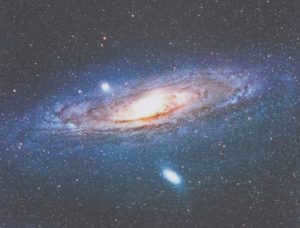

Hubble made the discovery of a Cepheid star in a remote galaxy known as Andromeda, at a distance of over two million light-years from our planet
In the year 1990, a space telescope was launched into orbit and named after the renowned scientist. Additionally, the asteroid 2069, which was first detected in 1955, was also named in his honor
The brilliant scientist not only unraveled the vastness of the universe but also brought about a paradigm shift in the field of astronomy. His categorization of galaxies based on their visual characteristics is widely recognized as the Hubble sequence among the scientific community. He is revered and commemorated as one of the foremost luminaries in astrophysics.
Enjoyed reading this article? Share it with your friends!
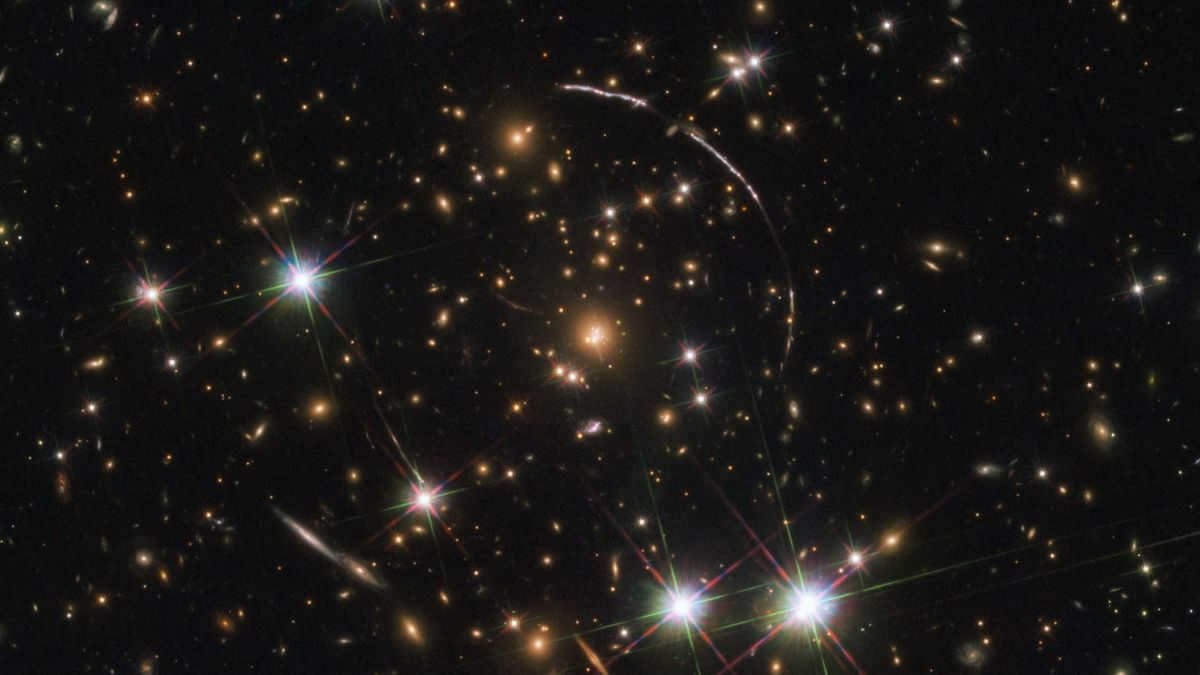
Galaxies are immense collections of stars and inhabit the entirety of our vast universe. However, determining the precise number of galaxies proves to be a daunting endeavor. One of the challenges lies in the sheer magnitude of numbers involved – once the count reaches the billions, the counting process becomes increasingly time-consuming. Additionally, our instruments impose limitations on our ability to accurately gauge the number of galaxies. To obtain the most optimal perspective, a telescope must possess a sizable aperture (the diameter of its primary mirror or lens) and be situated beyond Earth’s atmosphere to circumvent distortions caused by the planet’s air.
Mario Livio, an astrophysicist at the Space Telescope Science Institute in Baltimore, Maryland, stated that while estimates differ among experts, an acceptable estimate for the number of galaxies falls between 100 billion and 200 billion. The James Webb Space Telescope is anticipated to offer further insights into the origins of galaxies.
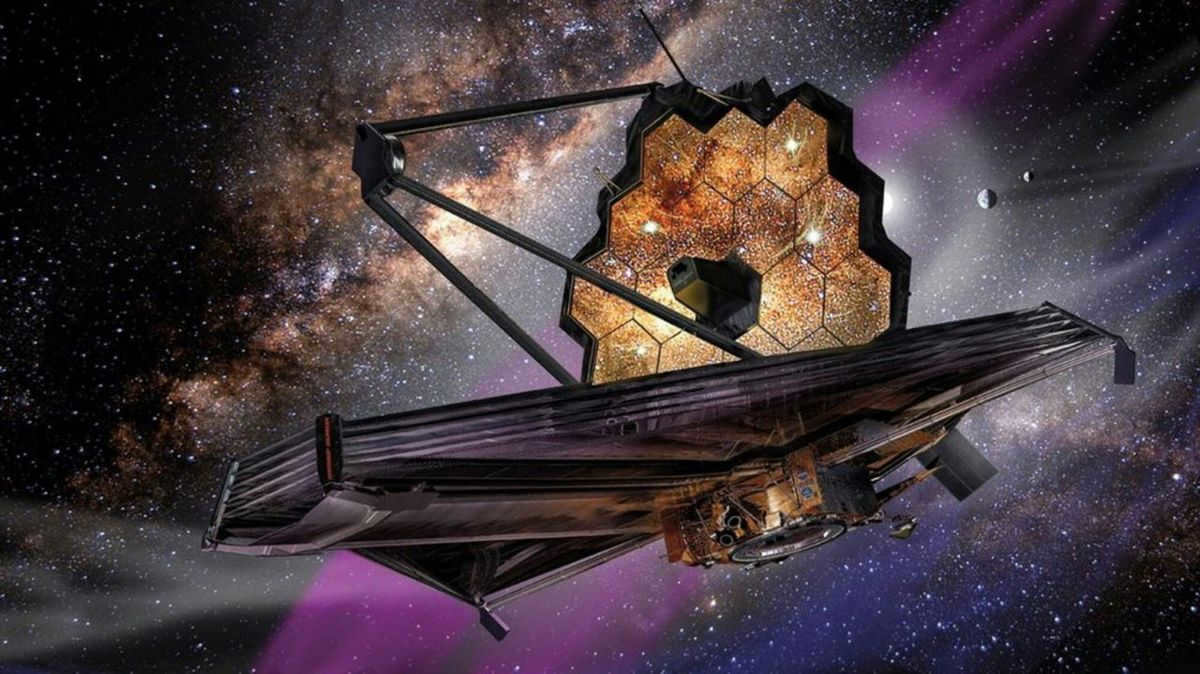
Livio stated that the Hubble Space Telescope has achieved great success in its ability to count and estimate the quantity of galaxies. The telescope, which was launched in 1990, initially faced difficulties with its primary mirror. However, these issues were resolved during a shuttle visit in 1993. Additionally, the Hubble underwent multiple upgrades and servicing operations prior to its final shuttle mission in May 2009.
Exploring the Vastness of Space
In the year 1995, a group of astronomers directed their telescope towards what initially appeared to be an empty region within the Big Dipper constellation. Over a period of 10 days, they meticulously gathered observations. The astounding outcome was the discovery of approximately 3,000 faint galaxies, each boasting a 30th star magnitude, all captured within a single frame. To put this into perspective, consider that Polaris, a well-known star, has a 2nd star magnitude.
As technology advanced and the Hubble Telescope underwent upgrades, astronomers decided to repeat the experiment not once, but twice. In both 2003 and 2004, utilizing the enhanced capabilities of the telescope, scientists embarked on the creation of what is now known as the “Hubble Ultra Deep Field.” This groundbreaking project involved a million-second exposure and led to the revelation of approximately 10,000 galaxies concentrated within a small region in the Furnace constellation.
Scientists utilized a telescope in 2012 to observe a portion of the “ultra-deep field” using improved instruments. Despite the narrower field of view, astronomers were able to identify approximately 5,500 galaxies, leading the researchers to label it as an “exceptionally profound field.”
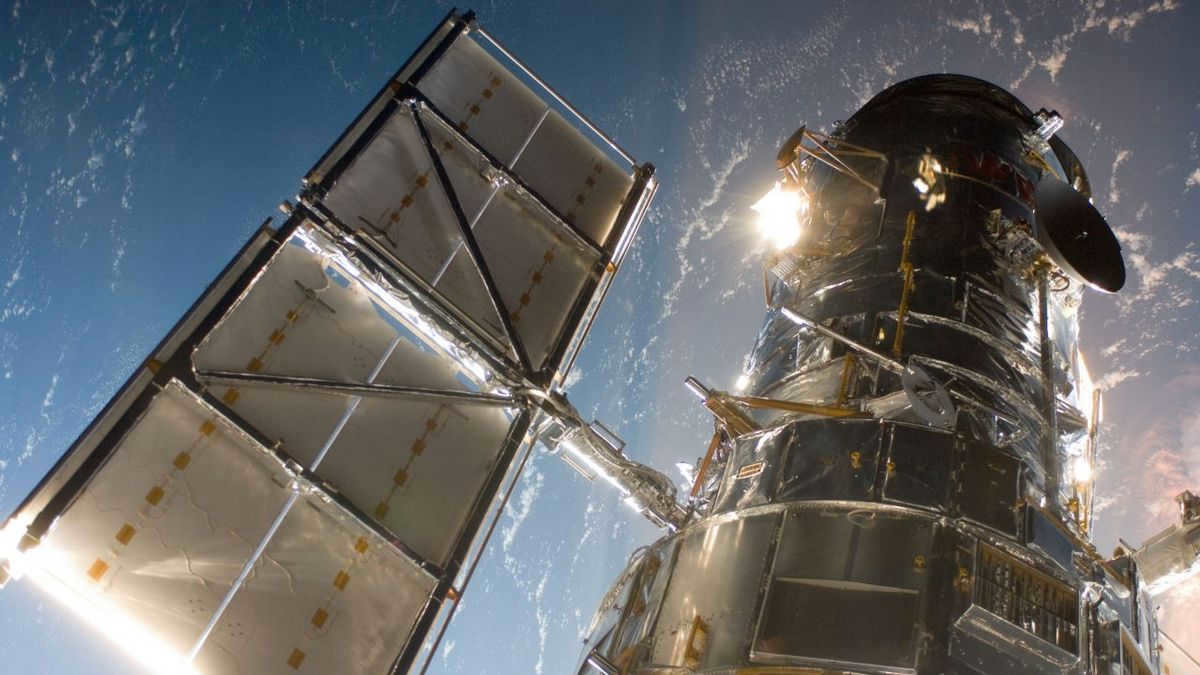
In general, the information obtained from the Hubble telescope indicates that there are approximately 100 billion galaxies in existence within the universe. However, it is expected that this number will rise to around 200 billion as advancements in telescope technology continue to be made.
No matter what device you utilize, the approach of estimating the quantity of galaxies remains the same. You select a segment of the sky captured by a telescope (in this instance, Hubble). Then, by utilizing the ratio of the sky slice to the entire universe, you can ascertain the number of galaxies in the universe.
“This assumption is grounded on the fact that the universe is uniform,” Livio remarked. “And we possess valid grounds to suspect that it is. It’s a cosmological principle.”
This principle can be traced back to Albert Einstein’s general theory of relativity. Einstein postulated that gravity is a distortion of space and time. Armed with this comprehension, numerous scientists (including Einstein) have endeavored to comprehend how gravity influences the entire universe.
“The cosmological principle states that matter in the universe is uniform and consistent across large scales,” according to NASA officials.
An illustration of the cosmological principle is observed in the cosmic microwave background (CMB), which is residual radiation from the early stages of the universe following the Big Bang. Utilizing tools like NASA’s Wilkinson Microwave Anisotropy Probe, scientists have discovered that this relic radiation is nearly identical in all directions.
Is there a possibility for the number of galaxies to alter?
By monitoring the movement of galaxies away from us, scientists have determined that the Universe is approximately 13.82 billion years old. Nevertheless, as the Universe continues to expand and grow, galaxies will progressively distance themselves from Earth. This could pose a challenge for astronomers attempting to observe them through telescopes.
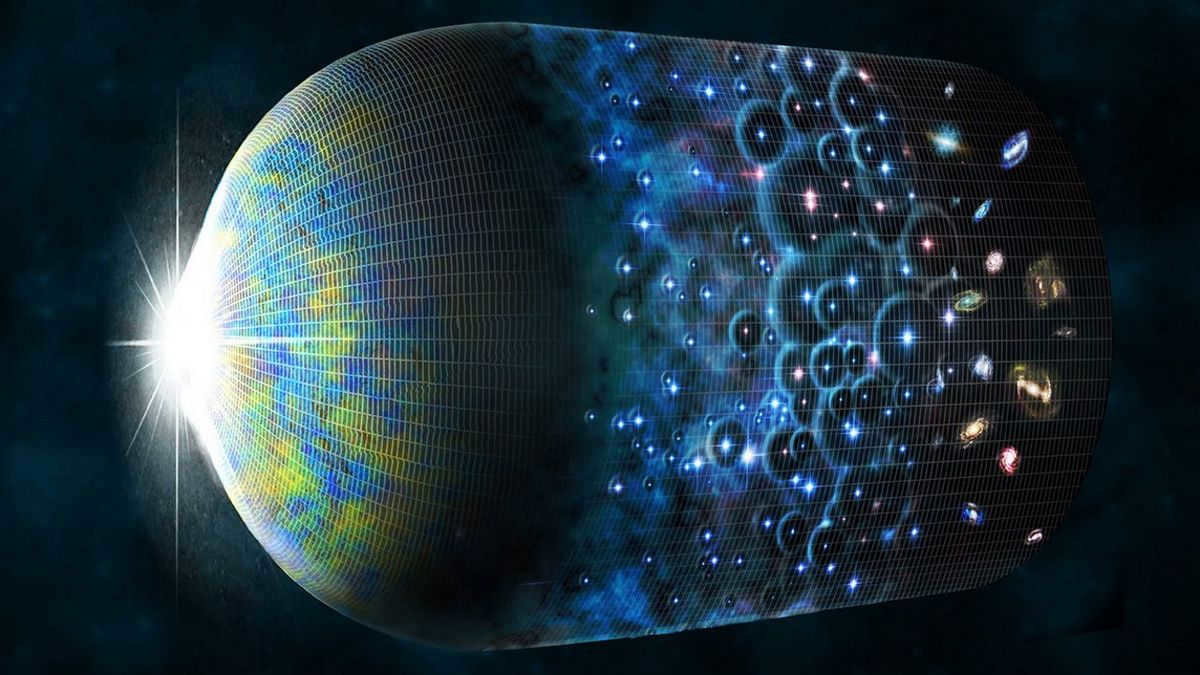
The expansion of the Universe is occurring at a rate faster than that of light, although this does not contradict the light speed limit as it is the matter itself that is expanding. Furthermore, the rate of expansion is accelerating.
This is where the notion of the “observable universe” – the part of the universe that we are able to observe – becomes relevant. According to Livio, in approximately 1-2 trillion years, there will exist galaxies that will be beyond our visual reach from Earth.
“We are only able to detect light emitted by galaxies that have had enough time to reach us,” Livio explained. “This does not imply that there is nothing more to the universe. Hence, the concept of the observable universe.”
What is the status of other universes?
Some theories suggest that in the early stages of the Universe, it underwent a rapid expansion, resulting in the formation of distinct “pockets” which gave rise to the existence of multiple universes. These separate regions are believed to be expanding at varying rates, containing different forms of matter, and governed by diverse physical laws.
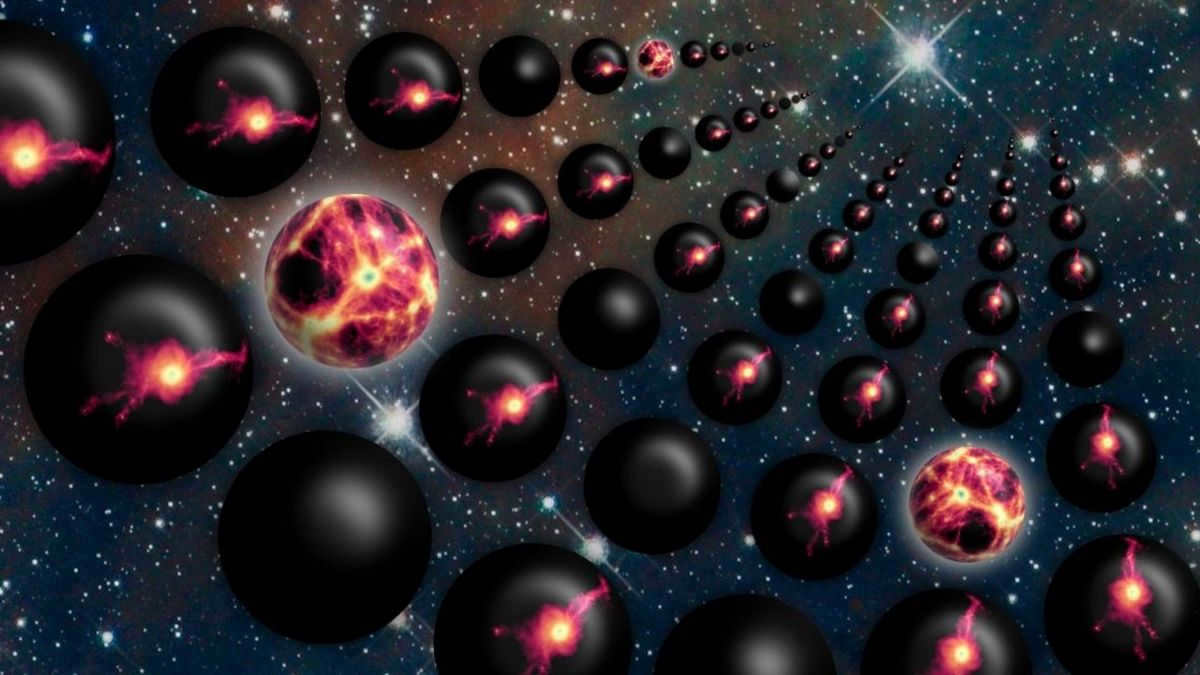
Livio has suggested that there could potentially be galaxies present in these alternate universes, although our current means of verification are limited. Consequently, it is plausible that the total count of galaxies exceeds 200 billion when accounting for these additional universes.
Webb’s impact
The launch of the James Webb Space Telescope will enable astronomers to refine their estimation of the number of galaxies in our universe. While the Hubble Telescope can currently observe galaxies that formed approximately 450 million years after the Big Bang, the James Webb Telescope will extend this timeline to 200 million years after the event.
“By studying some of the earliest galaxies and comparing them to present-day galaxies, we can gain insights into their growth and evolution,” NASA explained. “Additionally, Webb will provide scientists with valuable data on the types of stars that existed in these ancient galaxies.”
Researchers are also intrigued by the impact of dark matter on the creation of galaxies. This peculiar substance constitutes the bulk of the cosmos, accounting for approximately 80 percent. Despite its imperceptibility, examinations of galaxies since the 1950s have revealed a significant discrepancy between the observed mass and the visible mass.
